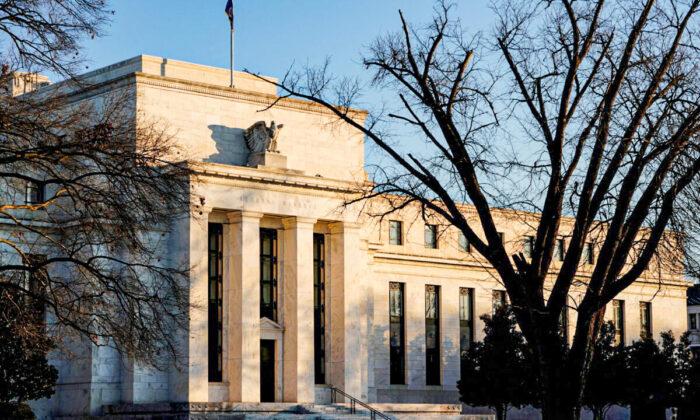On Dec. 15, Federal Reserve Chairman Jerome Powell announced a doubling of the central bank’s balance sheet taper. While this decision was largely anticipated by the markets, as Powell recently testified before Congress that the policy-setting Federal Open Market Committee would likely end its taper a few months early, the chairman seemed a bit nervous.
He has every reason to be uncomfortable, as equity markets are very sensitive to balance sheet tapers and reductions.
The Fed’s dual mandate, as established by Congress, is to promote maximum employment and price stability, not to prop up asset prices. Every time equity prices experience a significant decline, the Fed tends to run to the rescue with lower interest rates or more quantitative easing. The Fed’s behavior suggests and implies that the central bank is far more concerned about stock prices than the economy.
Former Fed Chair Alan Greenspan was one of the first chairmen to focus on the presumed wealth effect created as a byproduct of easy monetary policy. In February 2000, Greenspan testified before the Senate Banking Committee to defend his decision to maintain easy monetary policies, despite a growing concern from policymakers that the Greenspan-led Fed was inflating a massive asset bubble.
Once again, the Fed has inflated a massive asset bubble through overly loose monetary policy. By keeping interest rates low for an extended period, it has incentivized consumers and corporations to borrow at ultra-low rates to buy assets yielding a higher return. The longer the Fed holds rates at artificially low levels, the more speculation seems to run rampant as investors chase equity prices higher by borrowing record amounts of money on margin to buy stocks.
With consumer price inflation running rampant, the Fed is forced to contain inflation through monetary policy by removing its accommodative policy. History is very unfriendly to the Fed when it attempts to scale back its easy policies or, even worse, tighten monetary policy, as asset bubbles tend to burst. Both the dot-com crash and Great Financial Crisis were in part caused by the Fed tightening monetary policy.
While the FOMC suggested it might be appropriate to raise the federal funds rate later next year, which would begin to tighten monetary policy, the Fed is still maintaining an accommodative policy by reducing its asset purchases. Prior balance sheet tapers haven’t been friendly to the Fed, which hopes to quietly promote financial stability by maintaining elevated asset prices.
After all, when Americans feel wealthy, they tend to spend more. When they believe their wealth is going to continue increasing, they tend to borrow money and spend even more. Through the combination of an increase in borrowing and spending, inflation and economic growth can be sustained.
By removing accommodative policy, the Fed runs the risk of destroying or at the very least significantly impacting the asset bubble it worked so hard to create. When looking back at the history of balance sheet tapers or reductions, it doesn’t look good for the Fed.
On Oct. 29, 2014, the Federal Reserve announced the end of quantitative easing 3, which in effect was an abrupt taper of its balance sheet. While the stock market did rally into mid-2015 following the Fed’s announcement, by late June 2016, stock prices were no higher than they were at the time of the Fed’s announcement. Nearly two years of stock returns were lost at the hands of the Fed, and years later, when the Fed announced a reduction in its balance sheet, stocks would be adversely affected again.
On June 14, 2017, the Federal Reserve announced details for its plan to normalize its balance sheet by reducing the U.S. Treasury- and mortgage-backed securities held on its balance sheet. In October 2017, the monthly plan to reduce its balance sheet was initiated. Once again, stock prices rose following the beginning of the normalization plan, but by April 2020, more than two years later, stock prices were unchanged.
As Powell stood at the podium to announce to the world the end of the latest iteration of quantitative easing, he had every reason to be nervous. If history is any guide, the end of this post-pandemic bull market in equities is soon to end. With any luck, asset prices will remain elevated, but without further accommodative monetary policy, the asset bubble is likely to burst.





